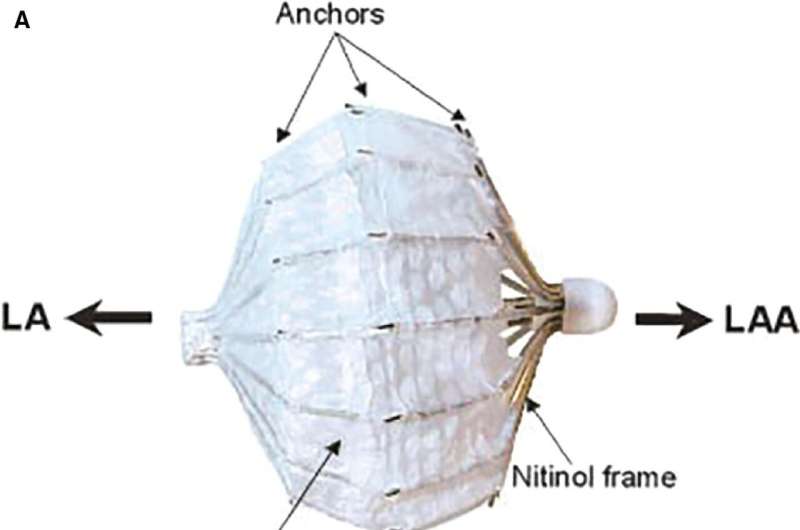This article has been reviewed according to Science X's editorial process and policies. Editors have highlighted the following attributes while ensuring the content's credibility:
fact-checked
proofread
Examining percutaneous left atrial appendage occlusion therapy

Atrial fibrillation (AF), the most common sustained cardiac arrhythmia, is increasing in incidence and prevalence worldwide. AF significantly increases the risk of intracardiac thrombus formation and, if left untreated, ischemic stroke. In patients with nonvalvular AF (NVAF), the left atrial appendage (LAA) has been determined to be the source of thrombus development in 91% to 99% of cases.
In this regard, oral anticoagulants (OACs) have become the standard treatment for stroke prevention in most patients with AF; however, OACs are associated with a risk of bleeding complications, and their efficacy depends on optimal patient compliance.
Among alternative approaches to embolic stroke prevention, surgical LAA excision for stroke prevention for valvular AF was attempted as early as the late 1940s. LAA excision remains recommended in surgical guidelines for patients with NVAF requiring open-heart coronary bypass or valvular replacement/repair surgeries.
However, owing to the traumatic/invasive nature and suboptimal outcomes of conventional surgical LAA intervention, clinical application of this approach is limited in current cardiology practice. Percutaneous LAA occlusion (LAAO) is increasingly being performed as an alternative to OAC for stroke prevention, particularly in patients with elevated bleeding risk.
Substantial progress has been made in percutaneous LAAO therapy since its inception approximately 20 years ago. This article systematically reviews the literature leading to the development of LAAO and the evidence-based clinical experience supporting the application of this treatment strategy for NVAF, with a focus on recently published critical evaluations of US FDA and CE mark approved LAAO devices.
Future perspectives regarding knowledge and technology gaps are also discussed, recognizing the many ongoing clinical trials that are likely to be transformative and the critical unanswered questions regarding LAAO therapy.
The paper is published in the journal Cardiovascular Innovations and Applications.
More information: Xinqiang Han et al, Percutaneous Left Atrial Appendage Occlusion Therapy: Past, Present, and Future, Cardiovascular Innovations and Applications (2023). DOI: 10.15212/CVIA.2023.0026





















